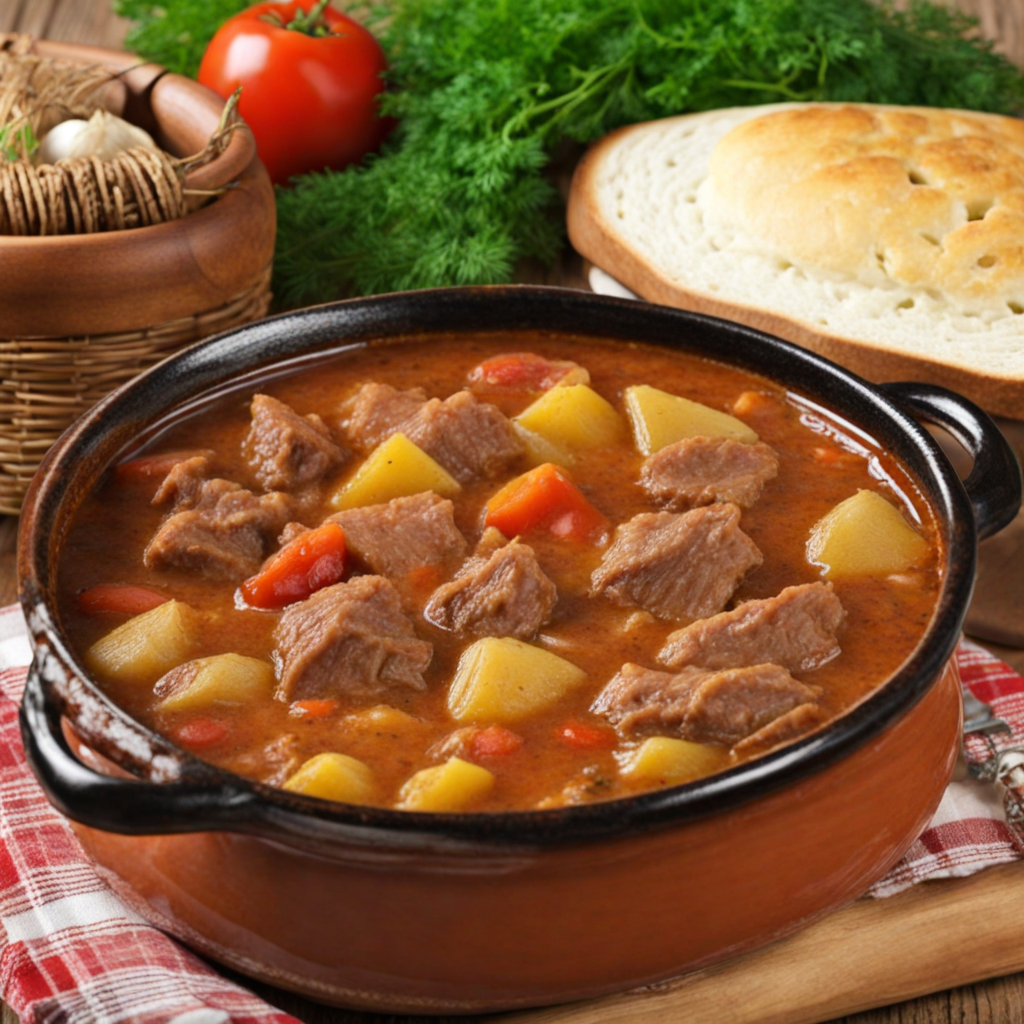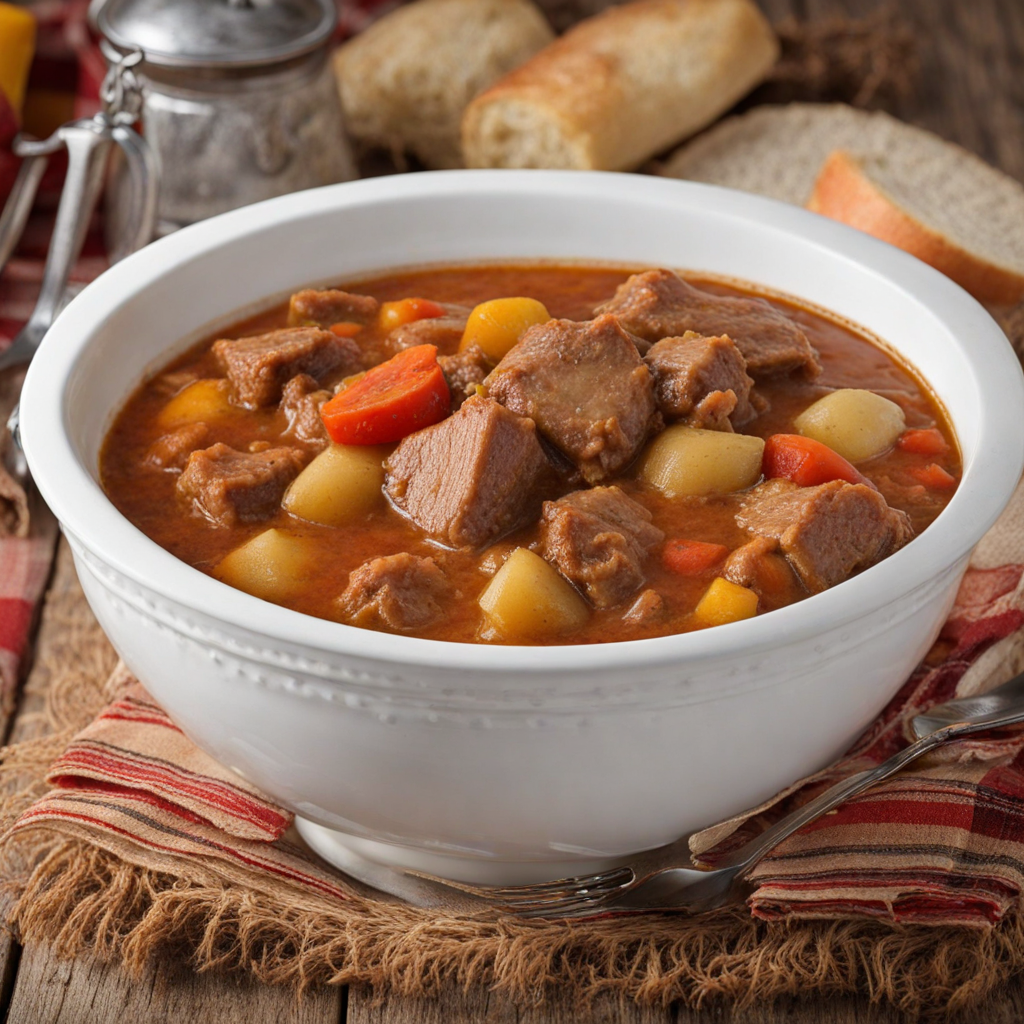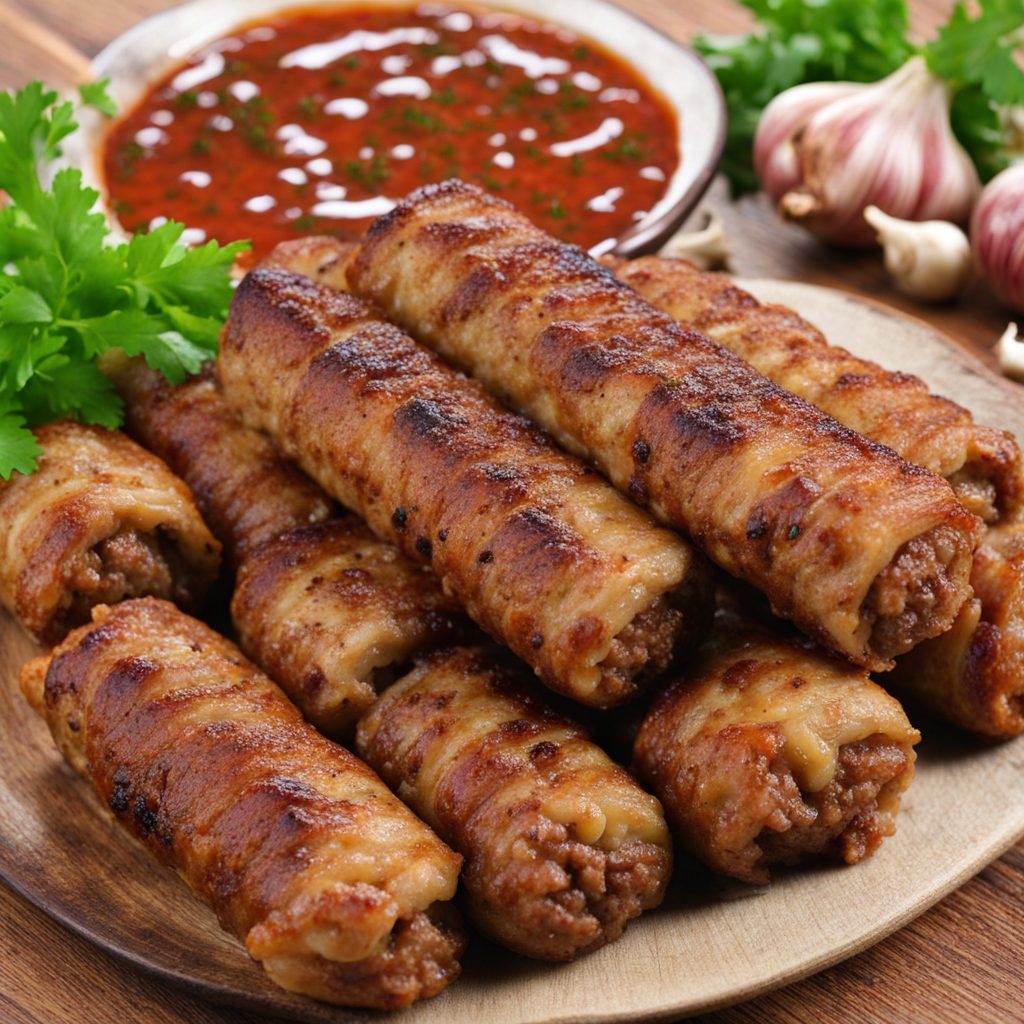Tocană
Tocană is a traditional Romanian stew that embodies the heart and soul of Romanian cuisine. This comforting dish is typically made with a variety of meats, such as beef, pork, or chicken, which are simmered slowly to develop a rich, deep flavor. The meat is often accompanied by an array of vegetables, including carrots, bell peppers, onions, and potatoes, each contributing to the stew's robust taste and hearty texture. The ingredients are usually seasoned with a blend of spices and herbs, such as dill, thyme, and bay leaves, enhancing the overall flavor profile and creating a dish that is both savory and aromatic. One of the exceptional aspects of Tocană is its versatility. While the most common versions feature meat, there are vegetarian options that substitute the protein with mushrooms or beans, making it accessible to various dietary preferences. The dish can also vary regionally, with different areas of Romania incorporating local ingredients and unique cooking techniques. The end result is a warm, satisfying meal that can be enjoyed year-round, whether during festive occasions or as a comforting family dinner. Served hot, Tocană is often accompanied by a generous slice of crusty bread, perfect for soaking up the flavorful broth. It can also be paired with polenta, which adds a delightful creaminess to the dish. This hearty stew not only nourishes the body but also brings people together, as it is typically prepared in large batches, making it ideal for sharing with family and friends. Discovering Tocană is not just about tasting a new dish; it's about experiencing a piece of Romanian culture and hospitality that warms the heart as much as it satisfies the palate.
How It Became This Dish
Tocană: A Culinary Journey Through Romanian History Origins of Tocană Tocană is a traditional Romanian dish that epitomizes the heartiness and rustic flavors of the region's culinary heritage. While its precise origins are difficult to pinpoint, it is widely believed that the dish has roots that traverse centuries, influenced by the agricultural practices and culinary traditions of various cultures that have touched Romania throughout its history. The name "tocană" is derived from the Romanian verb "a toca," meaning "to chop," which reflects one of the primary methods of preparation. Although it can be made with various ingredients, tocană typically consists of meat, such as beef, pork, or chicken, slow-cooked with a medley of vegetables, herbs, and spices. This method of cooking not only tenderizes the meat but also allows the flavors to meld beautifully, creating a rich, savory dish. Cultural Significance In Romania, tocană is more than just a meal; it is a symbol of hospitality, family gatherings, and communal celebrations. Traditionally, the dish has been prepared for special occasions such as holidays, weddings, and family reunions, illustrating its role as a comfort food that brings people together. The communal aspect of sharing tocană reflects the broader Romanian cultural values of kinship and togetherness. The preparation of tocană also reveals the agrarian roots of Romanian society. As a country with a predominantly agricultural background, the availability of local ingredients has shaped the dish over time. Seasonal vegetables and meats sourced from local farms are often used, emphasizing the connection to the land and the importance of sustainability in Romanian culinary practices. Regional Variations Tocană is not a monolithic dish; it varies significantly from region to region within Romania. Each area has its own unique take on the dish, influenced by local ingredients, cultural practices, and historical events. For example: 1. Transylvanian Tocană: Often featuring a base of beef or pork, Transylvanian tocană may include ingredients such as smoked meats and a variety of root vegetables like carrots and potatoes. The region's history of Saxon influence is also reflected in the use of sauerkraut or pickled vegetables that add a tangy flavor to the dish. 2. Moldovan Tocană: In Moldova, the dish tends to be heartier, with an emphasis on potatoes and beans. The use of spices such as paprika and garlic is more pronounced, reflecting the region's historical connections to various Eastern European culinary traditions. 3. Banat Tocană: Banat, a region known for its diverse ethnic groups, presents a unique take on tocană that may include Hungarian or Serbian influences. Here, the dish often features a combination of meats and a rich sauce, sometimes enhanced with wine or vinegar for added depth. 4. Dobrogea Tocană: In Dobrogea, which borders the Black Sea, tocană may incorporate seafood, a reflection of the region's maritime influences. The use of fresh herbs like dill and parsley is more common, lending a refreshing quality to the dish. Historical Development The evolution of tocană can be traced back to the Middle Ages, a period marked by significant agricultural developments in Romania. The introduction of new crops and farming techniques by various rulers and peoples, including the Ottoman Empire and Austro-Hungarian influences, brought new flavors and preparation methods to the region. During the Ottoman period, for instance, the concept of slow-cooking meats with vegetables became popular, influencing the Romanian culinary landscape. This method not only made the best use of available ingredients but also allowed for the creation of complex flavors. The Ottomans' use of spices and herbs enriched the Romanian palate, and many of these flavors found their way into traditional dishes like tocană. The 19th century marked a further refinement of the dish, as Romania began to embrace its national identity following centuries of foreign rule. As Romanians sought to define their cultural heritage, traditional dishes like tocană were celebrated as symbols of national pride. Cookbooks began to emerge, documenting regional recipes and elevating home cooking to an art form. The dish was popularized in urban centers as well, where chefs began to experiment with ingredients and presentation. In the 20th century, particularly during the socialist era, tocană took on a new dimension. With a focus on self-sufficiency and local produce, the dish became a staple in homes across Romania. Cooks adapted recipes based on availability, leading to a further diversification of the dish. It became a symbol of resilience, as families relied on tocană to feed loved ones during times of economic struggle. Modern Interpretations and Global Influence In contemporary Romania, tocană has evolved yet again, adapting to modern tastes and lifestyles. While the traditional recipes remain cherished, chefs are now experimenting with ingredients and presentation styles, fusing the classic with the contemporary. For instance, some modern interpretations might include a variety of gourmet meats, artisanal vegetables, or even vegetarian versions made with mushrooms or lentils, appealing to the growing demand for plant-based options. The globalization of cuisine has also allowed for the introduction of tocană to international audiences. Romanian restaurants in major cities around the world are showcasing this hearty dish as a representation of Romanian culture, often accompanied by polenta, a traditional side that complements the rich flavors of tocană. Moreover, as food tourism gains traction, visitors to Romania are increasingly seeking authentic culinary experiences. To enhance this, many local chefs and home cooks are hosting workshops where tourists can learn to prepare tocană, deepening their understanding of the cultural significance behind the dish. Conclusion Tocană is more than just a meal; it is a reflection of Romania's rich history, cultural diversity, and enduring traditions. From its rustic origins to its modern interpretations, the dish has woven itself into the fabric of Romanian society, symbolizing family, hospitality, and resilience. As it continues to evolve, tocană remains a beloved staple, serving not only as nourishment but also as a connection to the past and a celebration of Romanian culinary heritage. Whether enjoyed at a family gathering, a festive occasion, or a gourmet restaurant, tocană is a dish that embodies the spirit of Romania—a nation united by its love for good food and good company.
You may like
Discover local flavors from Romania







